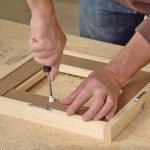Introduction to Blinds Maintenance and Repair
Blinds are essential for privacy and light control in our homes. Yet, they can break or wear down over time, causing frustration. Learning how to fix blinds allows you to handle issues quickly, without needing to replace them. In this section, we will explore common blind problems and arm you with DIY repair knowledge. With this guide, maintaining and repairing your blinds becomes an easy and satisfying task. Let’s keep your blinds functioning smoothly and extend their lifespan together.
Common Problems with Blinds
Blinds add beauty and functionality to any space. However, issues can arise, affecting their performance.
Reasons Why Blinds Break or Malfunction
Several factors contribute to blind malfunctions, impacting their usability and appeal.
- Wear and Tear: Frequent use can lead to wear and tear of blinds over time.
- Improper Use: Forceful or incorrect handling may cause damage, like broken slats.
- Environmental Factors: Sun exposure or moisture may warp or degrade blind materials.
- Poor Quality: Low-quality blinds might not withstand regular use and are more prone to issues.
- Mechanical Failures: Internal mechanisms can fail, leading to tilt or lift problems.
By understanding these common reasons, you can take steps to prevent damage and keep your blinds in good working condition.

Essential Tools and Materials for DIY Blind Repairs
To fix blinds, gather these tools and materials first.
Necessary Tools
- Flathead Screwdriver: For prying open the blinds’ caps and accessing parts.
- Phillips Head Screwdriver: For screws that require a cross-shaped tip.
- Needle-nose Pliers: Handy for pulling cords and fixing small parts.
- Scissors: To cut cords or trim materials.
- Rubber Bands: Can be useful for holding slats in place temporarily.
- Tape Measure: To check the length of the blinds or cords.
Helpful Materials
- Replacement Slats: If slats break and need replacing.
- Spare Cords: For when cords are frayed or snap.
- Lubricant: Silicone-based to ensure smooth operation of moving parts.
Gathering these tools and materials in advance will simplify the repair process. With them, you can fix many common blind issues.
Step-by-Step Instructions on Fixing Broken Slats
Dealing with broken slats can seem daunting, but it’s a doable task. Follow these easy steps to get your blinds looking like new.
- Identify the Broken Slat: Find the slat that needs fixing. It may be obvious if it’s hanging or has a clear break.
- Remove the Plugs: At the bottom of your blinds, locate the plugs. These hold the lift strings. Use a flathead screwdriver to pry them out gently.
- Release the Lift String: Pull out the lift string through the hole it sits in. You might see a knot at the end; untie or cut it off.
- Take Out the Damaged Slat: Slide out the broken slat. If there’s an extra one at the bottom, that’s perfect for replacement.
- Slide in the Replacement Slat: Put the new slat into the spot where the broken one was.
- Rethread the Lift String: Follow the same path the string was on earlier. Weave it through the slats and the bottom part.
- Secure and Knot the Strings: Once the string is in place, tie a new knot at the end. This keeps the slat secure.
- Replace the Plugs: Put back the plugs you removed earlier. Make sure they fit snugly to hold everything in place.
With these steps, you’ve fixed a broken slat. Remember to handle each part gently to avoid further damage. Keep tools close by for quick fixes. Soon, your blinds will function smoothly again.
Addressing Tilt and Cord Issues
Fixing tilt and cord problems on blinds can be simple with the right know-how.
Repairing Tilt Mechanism Problems
Tilt mechanism issues can prevent slats from angling correctly. Here’s how to fix:
- Check for Obstructions: Clear any dust or debris causing blockage.
- Lubricate the Mechanism: Use silicone spray to reduce friction.
- Tighten Loose Parts: Use a screwdriver to secure any parts that have loosened.
Addressing issues with the tilt mechanism quickly is key to restoring full functionality.
Solving Cord Malfunctions and Tangles
Cord problems can stop blinds from raising or lowering smoothly. Try the following steps:
- Untangle the Cord: Work slowly to remove any knots.
- Cut Damaged Cord: Remove any frayed sections and replace with a new cord.
- Even Out Cord Lengths: Adjust the cords to ensure they are balanced.
Fixing cord malfunctions may require patience, but corrects most issues that impair motion.

Dealing with Stuck or Uneven Blinds
Dealing with blinds that are stuck or uneven is a common issue, but these problems are often easy to fix with the right approach and a bit of patience. Here’s how to tackle these challenges and get your blinds working smoothly again.
Fixing Stuck Blinds
Stuck blinds can be frustrating, but don’t worry—there are a few simple solutions to try.
- Use a Lubricant: Apply silicone-based lubricant to moving parts.
- Check for Obstructions: Remove any debris or dirt stuck in the mechanism.
- Gently Wiggle the Slats: Doing this can often free them if they are just slightly stuck.
These steps should help free up blinds that are stuck.
Correcting Uneven Blinds
Uneven blinds can disrupt the look of a room and affect functionality. Here’s what you can do.
- Adjust the Cord Tension: Make sure cords are even and tensioned correctly.
- Ensure Proper Installation: Sometimes re-installing the blinds levels them out.
- Replace Damaged Components: Swap out bent or warped parts to fix the balance.
By following these steps, you can usually solve uneven blind issues and restore a balanced look.
Professional Help: When to Call in Experts
Sometimes, blind repairs may need expert help. Complex mounting issues or sealed blinds can be tough tasks. Motorized or smart blinds often need special skills. When blinds suffer lots, a pro might save time and money. Here are signs you should call in the experts:
Complex Mounting Issues
If blinds sit on tough spots or large windows, pros handle it best. They have the right tools and know-how.
Advanced Repairs for Motorized or Smart Blinds
Smart blinds need tech skills for fixing. Don’t risk damage; call a specialist.
Sealed or Built-In Blinds
These blinds are tricky. Pros can fix them without hurting window seals.
Extensive Damage
A pro can tell if blinds are worth fixing or need replacing. Trust their advice.
Brand-Specific Mechanisms
Unique brands may need special parts or knowledge. Experts will have access.
Professional help ensures safe and effective repairs. They can deal with tricky problems fast. Don’t be shy to call an expert for help with your blinds.

Maintenance Tips to Prolong the Life of Your Blinds
To keep your blinds working longer, follow these maintenance tips.
- Clean Regularly: Gently wipe with a damp cloth to remove dust. This stops buildup that can cause issues.
- Inspect Often: Look for signs of wear or damage. Fix small problems before they get bigger.
- Handle with Care: Use blinds gently. Avoid pulling or twisting them too hard.
- Keep Dry: Protect blinds from moisture. Water can warp or damage the material.
- Use Correctly: Follow the manufacturer’s instructions on proper use. This helps prevent damage.
- Avoid Direct Sun: If possible, shield blinds from intense sun. It can fade or weaken them.
- Update Parts: Replace worn parts like cords or slats promptly. This keeps blinds operating well.
With good care, your blinds will look great and operate smoothly for years. Start these habits now and see the difference they make.
Conclusion: Ensuring Longevity and Smooth Operation
In wrapping up this guide to fixing blinds, remember that regular maintenance and careful handling will ensure their lasting and smooth performance. Repairing blinds might seem tricky, but with the proper tools and a step-by-step approach, most issues can be managed without professional help.
Regularly dust and clean your blinds to protect from grime build-up. Inspect them often for any signs of wear or malfunction. Always handle blinds gently. If blinds are mishandled, they are more likely to break. Keep blinds dry and away from too much direct sunlight which can cause damage.
When your blinds need fixing, revisit this guide. Use the right tools to fix slats, cords, and tilt mechanisms. If blinds are stuck or uneven, the provided tips can help make them level and smooth. For complicated situations or advanced systems like motorized blinds, seeking professional help is a good choice.
By following these maintenance tips and repair solutions, you can extend the life of your blinds. This way, they will continue to provide beauty and function in your home for a long time. Embrace the confidence to tackle blind issues head-on and keep your window treatments in top shape.








